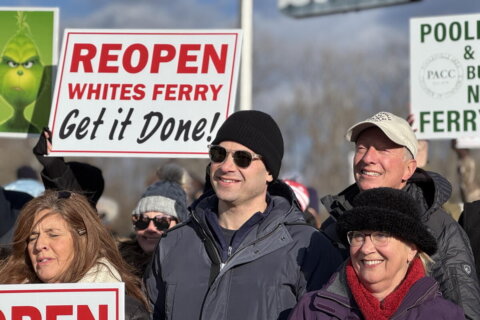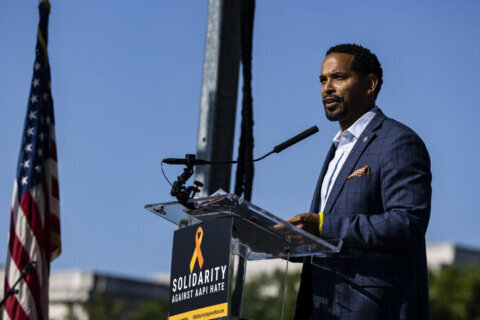This article was republished with permission from WTOP’s news partners at Maryland Matters. Sign up for Maryland Matters’ free email subscription today.
Montgomery County’s public financing law for county elections served its primary purpose the first time around, a new report finds: Reducing the influence of big money on local campaigns.
The study, released late last week by the Maryland Public Interest Research Group, showed that candidates who participated in the public financing program during the 2018 election attracted far more donors than those who did not abide by the contribution limits of the public financing program and also relied far more heavily on small donors to bankroll their campaigns.
Candidates who qualified for the program that matched small donations raised 98% of their money in small contributions ($150 or less) and matching funds compared to 3% for candidates who did not participate in the public financing program.
“It’s incredible to see the small donor program in action. We are building a democracy where everyone has equal opportunity to participate in county elections regardless of race, gender, age, or income,” said Maryland PIRG Director Emily Scarr. “With the small donor program Montgomery County is helping ensure county government is accountable to residents, not wealthy special interests.”
The watchdog is touting the results of its report as Howard County gears up to offer public financing for its elections in 2022. Baltimore City voters have approved public financing for the 2024 elections, and in Prince George’s County, public financing will take effect in 2026. When Baltimore County voters go to the polls in 2020, they’ll vote on a ballot initiative on whether to set up public financing in 2026. Anne Arundel County leaders this year received authorization from the Maryland General Assembly to craft their own public financing regime.
The Montgomery County public financing program is the result of 2014 legislation that went into effect in the 2018 election cycle. In order to participate, candidates:
— Must accept only donations from individuals, of between $5 and $150.
— Must refuse donations from large donors, political action committees, corporations, other candidates and political parties.
— Must meet minimum thresholds for number of county donors and amount of money raised in order to demonstrate that their pursuit of public office is viable.
Of the 57 candidates who ran for Montgomery County executive or County Council in 2018, 35 signed up to participate in the public financing system, and 24 wound up qualifying for matching funds by reaching a threshold of small-dollar contributions.
Candidates qualifying for the program received an average contribution of $86 compared to an average contribution of $1,145 for non-participating candidates.
Candidates who qualified for the program on average received almost twice as many contributions from individuals than candidates who did not participate in the program (850 vs. 434).
Candidates running for County Council seats were able to use the small donor system to run competitive races. Including matching funds, the average contribution for candidates participating in the program was similar to the average contribution for candidates accepting large contributions. ($306 for qualifying vs $292 for non-participating).
Montgomery County Executive Marc B. Elrich participated in the public financing program. So did all four County Council at-large winners — Gabriel Albornoz, Evan Glass, William Jawando and Hans Riemer — along with two district-level Council members who were reelected in 2018, Sidney Katz and Nancy Navarro. All are Democrats.
“Based on the 2018 election, Montgomery County’s matching program worked as intended, and should serve as a model for other communities, both in Maryland and elsewhere in America,” the Maryland PIRG report concludes.







